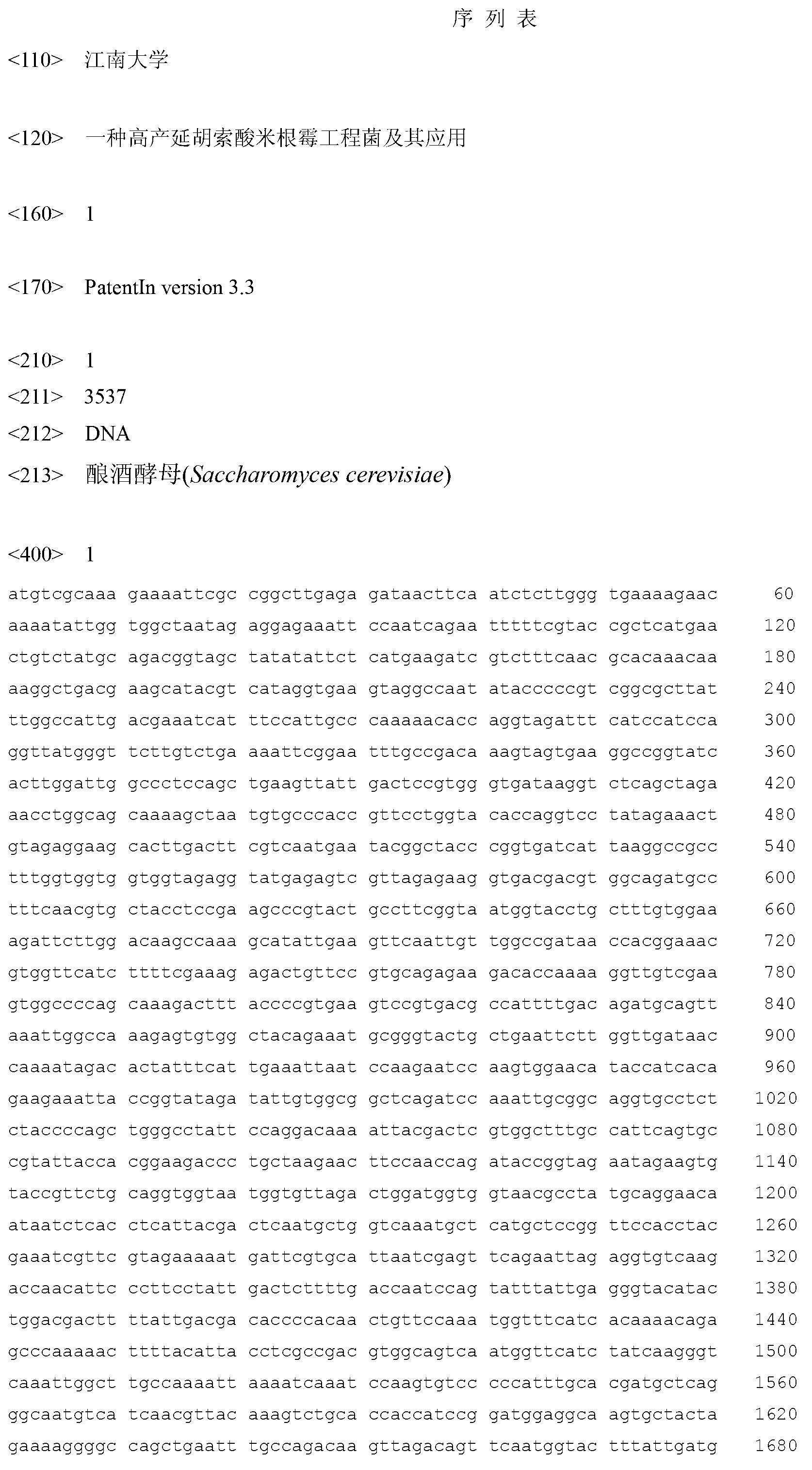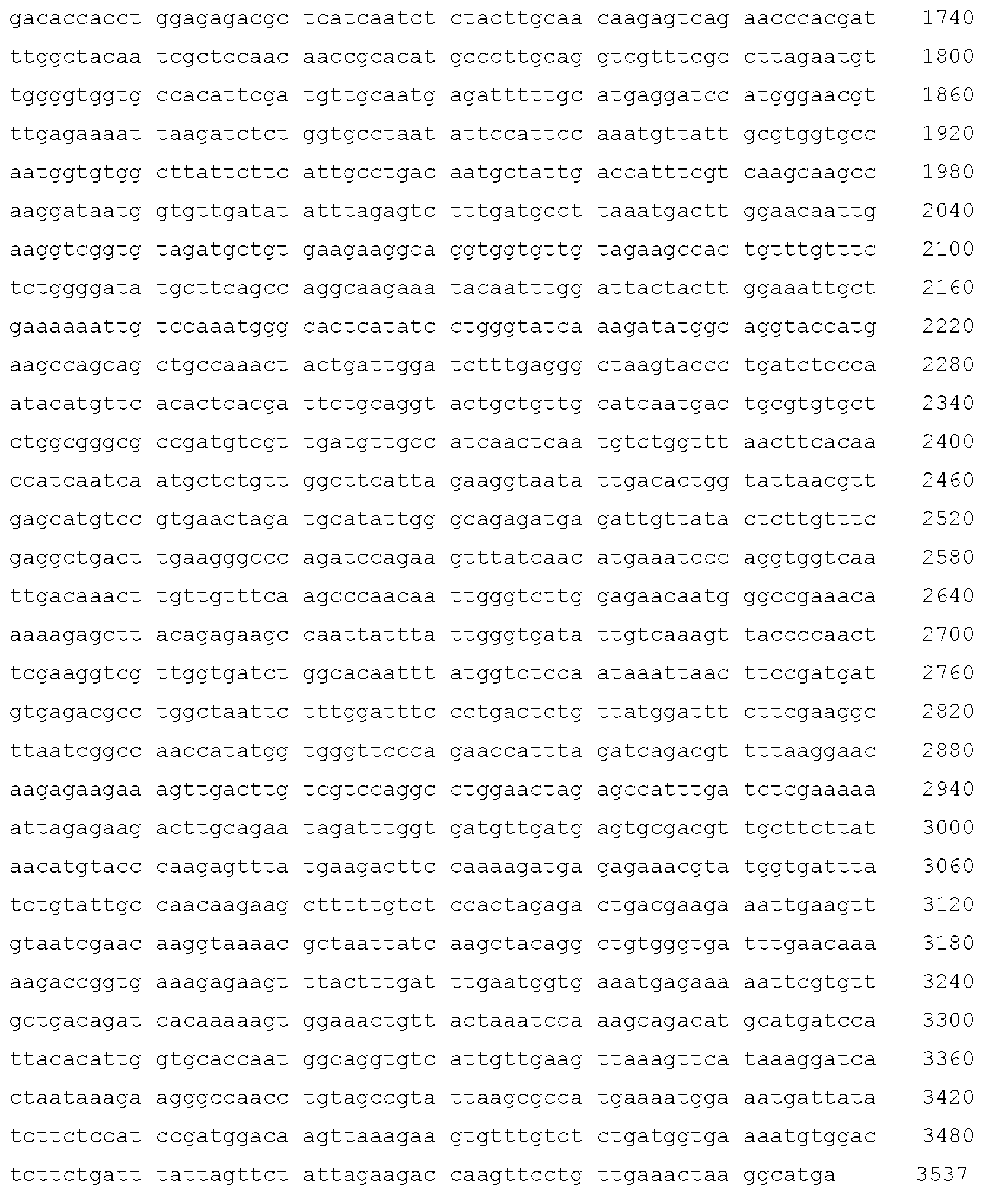High-yield fumaric acid Rhizopus delemar engineering bacterium and application thereof
A technology of Rhizopus oryzae fusate and Rhizopus oryzae, applied to fungi, using vectors to introduce foreign genetic material, microorganisms, etc.
- Summary
- Abstract
- Description
- Claims
- Application Information
AI Technical Summary
Problems solved by technology
Method used
Image
Examples
Embodiment 1
[0027] Wash the spores from the plate with sterile normal saline, filter them through 6 layers of lens paper and wash them with sterile normal saline 3 times, inoculate the washed spores in 30mL YEPD liquid medium, cultivate them at 37°C and 200rpm for 4h to make the spores During germination, samples were taken every 1 h to observe the spore morphology once. Germinated spores were collected by centrifugation at 8000 rpm at 4°C for 15 min, washed once with 20 mL of pre-cooled sterile saline, resuspended in 10 mL of YED medium, and incubated at 30°C at 150 rpm for 60 min. Collect the spores by centrifuging at 8000rpm at 4°C for 10min, wash once with 10mL pre-cooled EB buffer, suspend the spores with 5mL pre-cooled EB buffer, aliquot them, and put them on ice for later use.
[0028] Example 2 Fusion PCR method to construct the target fragment ScPYC1 and the construction of the expression plasmid
Embodiment 2
[0029] The pdcA promoter fragment with a length of 1219 bp and the terminator fragment with a length of 943 bp were obtained by chemical total synthesis method, and two restriction sites of PacI and SalI were added to the 5' ends of the pdcProF and pdcTerR fragments, respectively.
[0030] Using the NM 001180927.1 sequence published by NCBI, the PYC1 fragment of the coding region of the pyruvate carboxylase gene of Saccharomyces cerevisiae was synthesized by chemical total synthesis;
[0031] Under the action of pfu enzyme, through fusion PCR, the fusion fragment PYC1 of the three oligonucleotide chains of pdcAPro, pdcATer and PYC1 is amplified. Under the action of restriction enzymes PacI and SalI and DNA ligase, the fusion fragment PYC1 was connected to the previously constructed plasmid pRS303H (Taxis C, Knop M. System of centromeric, episomal, and integrative vectors based on drug resistance markers for Saccharomyces cerevisiae. Biotechniques, 2006.40(1):73-78.) The transf...
Embodiment 3
[0033] After the recombinant plasmid pRS303H-PC was purified, R. delemar NRRL1526 was electroporated to germinate spores. The strains that can grow on the PDA+HygB medium were transferred to the PDA medium for spore production culture, and the spore suspension was coated on the PDA+HygB medium culture dish, which was continuously passaged for 3 times to obtain genetically stable recombinants. The results of chemical sequencing were consistent with expectations, indicating that pRS303H-PC had been successfully integrated into the R.delemar genome. The resulting recombinant strain was named R.delemar-pRS303H-PC. When the bacterium grows on the medium with glucose as the only carbon source, the activity of pyruvate carboxylase is 4.59U / mg protein, which is 5.4 times that of the original strain.
[0034] Embodiment 4 fermentation produces the method for fumaric acid
PUM
 Login to View More
Login to View More Abstract
Description
Claims
Application Information
 Login to View More
Login to View More - R&D
- Intellectual Property
- Life Sciences
- Materials
- Tech Scout
- Unparalleled Data Quality
- Higher Quality Content
- 60% Fewer Hallucinations
Browse by: Latest US Patents, China's latest patents, Technical Efficacy Thesaurus, Application Domain, Technology Topic, Popular Technical Reports.
© 2025 PatSnap. All rights reserved.Legal|Privacy policy|Modern Slavery Act Transparency Statement|Sitemap|About US| Contact US: help@patsnap.com


